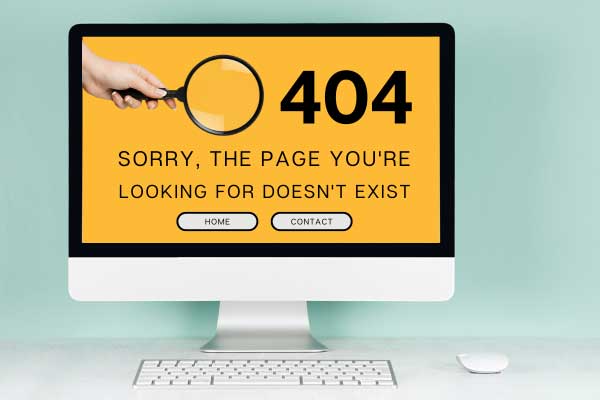Maximise your website’s performance in Q4 with essential technical SEO strategies. From optimising site speed and ensuring mobile-friendliness to resolving crawl errors, these tactics are vital for boosting your search visibility and user experience as we head towards 2025.
As we approach the final quarter of the year, it’s crucial to refine your technical SEO practices to stay ahead of the competition. This blog will guide you through the key strategies you need to implement, including improving site speed, optimising for mobile users, and resolving common crawl errors. By addressing these elements, you can enhance your website’s performance and prepare for increased traffic, ensuring a seamless experience for your visitors and better search engine rankings.
1. Boost Your Site Speed
Website speed is a critical ranking factor for Google and impacts user experience. With increased traffic expected in the final quarter, slow-loading pages can result in higher bounce rates and lost conversions.
What to check:

Free Tool Recommendation:
Google PageSpeed Insights helps analyse your website’s speed and gives suggestions for improvement.
If you need a more permanent solution, a professional web design service could help improve your site’s overall speed and structure.
2. Make Your Website Mobile-Friendly
More users than ever are accessing websites via their smartphones. Google’s mobile-first indexing means that your mobile site is prioritised in search results, so ensuring it’s optimised is essential.
Steps to take:

- Run Google’s Mobile-Friendly Test: Identify areas where your mobile experience can improve.
- Simplify your layout: Use clean, easy-to-navigate designs.
- Test your menus: Ensure they’re intuitive on smaller screens. Use Responsinator to check how your menus appear across various devices.
Free Tool Recommendation:
Use Google Lighthouse to assess your site’s mobile-friendliness and get actionable insights for improving performance.
3. Resolve Crawl Errors
Crawl errors can prevent search engines from indexing your pages, significantly hindering your website’s rankings. Use Google Search Console to check for crawl errors like 404 pages or server issues.
Here’s what to do:

- Monitor Search Console: Regularly review for any crawl issues.
- Fix broken links: Ensure all internal and external links are functional.
- Review your robots.txt file: Use the Robots.txt Tester in Google Search Console to ensure you’re not unintentionally blocking important pages from being indexed.
- Reduce the number of redirects: Minimise unnecessary redirects and eliminate any redirect loops that can slow down site performance.
- Use a flat, organised site structure: A clear structure with consistent URLs helps both users and search engines navigate your site. For example, use
/products/category/product-nameinstead of/product-page?id=1234. - Implement breadcrumbs: These navigation aids not only improve user experience but also help search engines understand your site’s hierarchy.
Free Tool Recommendation:
Google Search Console is essential for monitoring crawl and indexing issues.
Our SEO Audit can thoroughly examine crawl errors and other hidden technical problems impacting your rankings.
4. Submit and Optimise Your XML Sitemap
Submitting an XML sitemap allows search engines to easily crawl and index all relevant pages of your site. This is particularly important if you’ve made any changes to your site’s structure in the past few months.
Here’s what to check:

- Submit your sitemap to Search Console: This tells Google exactly what to crawl.
- Keep it updated: Ensure your sitemap reflects your latest content.
- Check formatting: Use an XML sitemap generator to confirm everything is properly formatted.
Free Tool Recommendation:
XML Sitemap Generator can help you generate a sitemap for better indexing.
Struggling with technical tasks? Our SEO Services include sitemap optimisation to ensure search engines index your entire site.
5. Optimise for Core Web Vitals
Core Web Vitals are key performance metrics Google uses to evaluate user experience. They measure load time, interactivity, and visual stability. Improving these metrics can enhance both user satisfaction and SEO performance.
What to do:

- Largest Contentful Paint (LCP): Ensure your main content loads within 2.5 seconds.
- First Input Delay (FID): Make sure pages are interactive within 100 milliseconds.
- Cumulative Layout Shift (CLS): Minimise unexpected content shifts as your page loads.
- Test load times with and without a CDN: A Content Delivery Network (CDN) speeds up your site by storing copies of your pages in various locations worldwide. Use WebPageTest to assess load times.
Free Tool Recommendation:
Google Lighthouse analyses your site’s Core Web Vitals and provides actionable insights.
An in-depth SEO Audit will help identify and resolve any Core Web Vital issues holding back your rankings.
6. Address Duplicate Content
Duplicate content can confuse search engines and harm your SEO efforts. It’s essential to ensure every page on your website contains unique content.
Steps to resolve it:

- Use an SEO Audit Tool: These tools can help you identify duplicate content across your site.
- Implement canonical tags: Use them to tell search engines which version of a page is the original.
- Noindex duplicates: If you find duplicate content that you want to keep (for instance, if you have a blog post and a corresponding video version), use the noindex tag to prevent search engines from indexing those pages. This way, you maintain both formats for user engagement while ensuring that search engines focus on the primary content, avoiding confusion. This approach allows users to choose their preferred format without diluting your SEO efforts.
Free Tool Recommendation:
Screaming Frog offers a free version to crawl up to 500 URLs and identify duplicate content.
An SEO Audit can uncover and fix duplicate content issues across your site, ensuring each page provides unique, value-driven content.
Free Download
Download Free Technical SEO Checklist for Q4
To streamline your technical SEO efforts, download our free Technical SEO Checklist. This handy resource will guide you through essential tasks to optimise your website, ensuring improved visibility and performance in search engines. Use this checklist to track your progress, prioritise tasks, and stay on top of critical elements that enhance your site’s SEO health.
Author Spotlight
Ozlem "Oz" Aksel Basboga
Lead Digital and SEO Strategist
Oz leads digital strategy at Aksel Digital, specialising in SEO, content, and brand growth. With a background in architecture and marketing, she combines creativity with analytics to deliver results.
Oz lives in London with her family and their cat. A nature lover and avid runner, she fuels her day with black coffee and big ideas.





